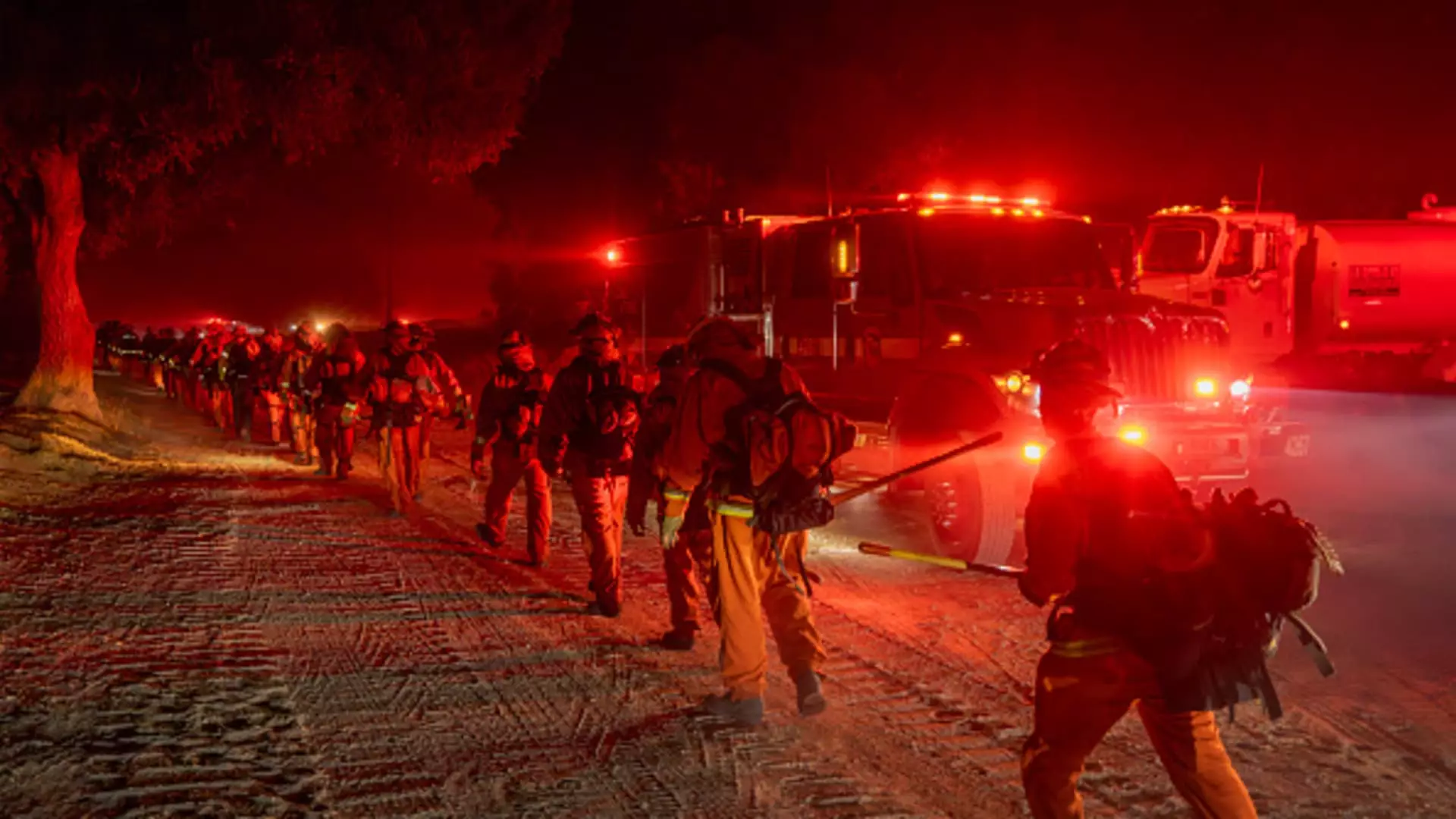The relentless wildfires in Southern California have become a tragic spectacle, a dramatic interplay between natural forces and human vulnerability. The latest incident, known as the Hughes Fire, underscores a concerning trend exacerbated by climatic shifts and environmental neglect. Initiating on a Wednesday near Castaic Lake, the Hughes Fire spread rapidly, consuming over 10,000 acres amid dry, windy conditions typical of the Santa Ana season. As firefighters worked tirelessly, the response not only aimed to contain the flames but also highlighted underlying issues related to climate change, community preparedness, and resource management.
By Thursday evening, the California Department of Forestry and Fire Protection (Cal Fire) reported the Hughes Fire at 36% containment, a critical achievement given the scale and rapid spread of the fire. The urgency of the situation led to mandatory evacuation orders affecting over 31,000 residents. Although these were lifted later, a significant number of people (approximately 54,900) remained on alert, highlighting the precarious balance local authorities must maintain in safeguarding public safety while managing operational limitations.
Brent Pascua, a battalion chief with Cal Fire, described this blaze as a product of the fierce Santa Ana winds—strong gusts that can turn simple flames into unstoppable infernos. With dry vegetation serving as tinder, the fire engrossed the rugged terrain, making it a daunting challenge for emergency services. The ongoing investigation into the fire’s cause raises important questions about environmental stewardship and the role of human activity in these catastrophic events.
What makes the Hughes Fire particularly alarming is its occurrence shortly after the devastating Palisades and Eaton fires, which claimed lives and left thousands homeless. This series of fires converges to paint a grim picture of increased wildfire frequency and intensity across the region, driven in part by factors associating climate change with heightened fire risks. The National Weather Service’s “red flag” warnings indicate critical safety conditions, as any stray spark could lead to a disaster.
Southern California has historically battled wildfires, but the scale and ferocity of recent events signal a dramatic shift. The Eaton Fire, for example, devastated over 14,000 acres and destroyed more than 9,400 structures. Its impact on the communities, particularly Altadena, was profound, necessitating a comprehensive reassessment of fire management strategies. Meanwhile, the Palisades Fire’s influence rippled through Malibu and Pacific Palisades, marking a period some have termed one of the worst in Los Angeles’ firefighting history.
The correlation between escalating fires and climate conditions cannot be overstated. Experts are increasingly sounding alarms about how global warming intensifies dry spells and disrupts seasonal climates, setting the stage for wildfires that are more severe and unpredictable. The fallen trees and brittle shrubs that line the hillsides serve as silent testimonies to years of neglect and poor land management practices that must be addressed urgently.
Additionally, the juxtaposition between urban sprawl and natural geography exacerbates fire risk. As communities expand into previously untamed wildlands, the interface between human dwellings and natural spaces becomes fraught with danger. Emergency services grapple with the challenge of protecting homes while navigating the complexities of topographical variables that can hinder firefighting efforts.
As Southern California continues to wrestle with the fallout from recent wildfires, it is an opportune moment for introspection and strategic reform. The Hughes Fire, along with its predecessors, urges policymakers, environmental scientists, and community leaders to collaboratively reshape fire management policies, advocating for better preventative measures and community education programs around wildfire preparedness.
Ultimately, a multi-faceted approach that emphasizes sustainable development alongside proactive conservation strategies may help mitigate the risks associated with wildfires. Collective action informed by scientific principles and community input may pave the path toward a more resilient future, where the threat of fire does not overshadow the beauty of Southern California’s sprawling landscapes.

Leave a Reply